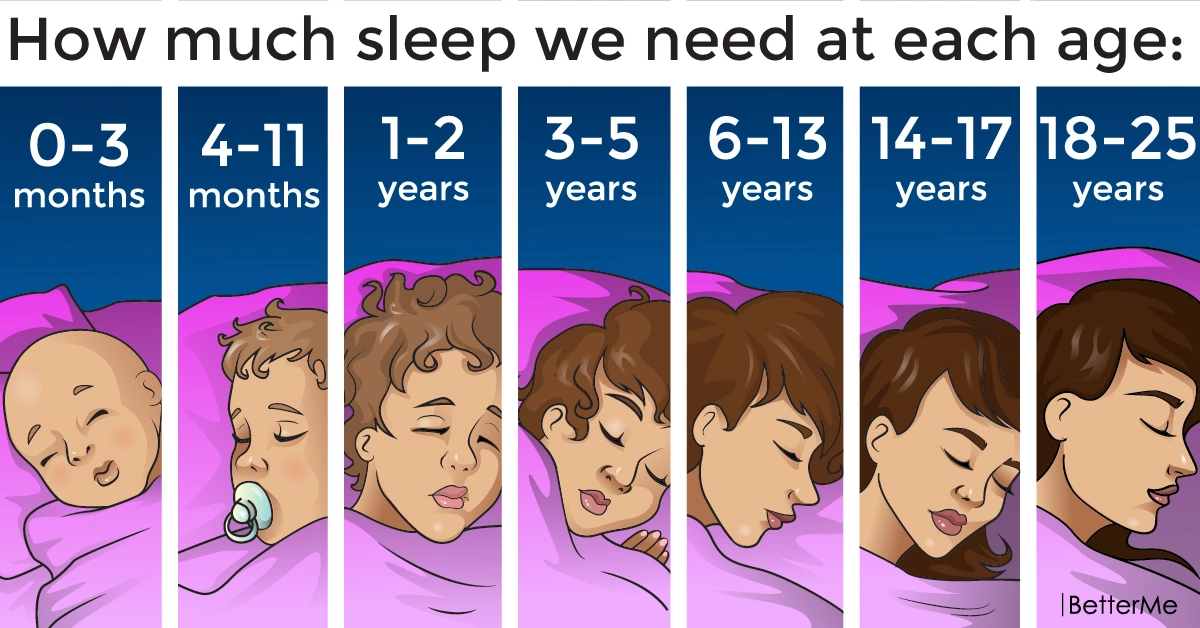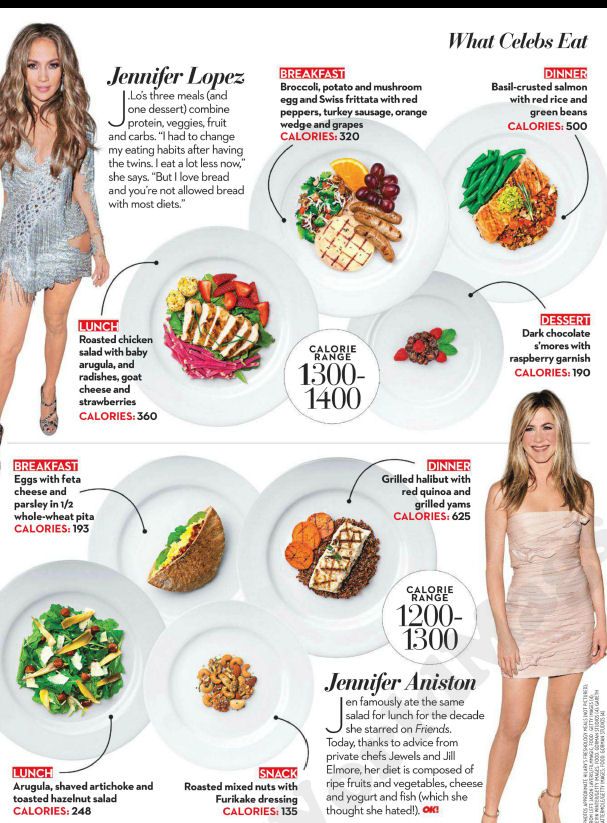Food menu for 6 months old baby
Baby Meal Plan: 6 to 9 Month Old
What should you know about feeding your 6- to 9-month-old?Learn about how to introduce solid foods to your baby
Know that what foods you introduce now help influence baby’s preferences in the future
Explore menus that help you understand the transition from purees to soft solids
Starting solid foods is an exciting time for you and your baby. The American Academy of Pediatrics and the World Health Organization recommend introducing solid foods around 6 months of age.1,2
Check out our signs of readiness article and speak with your baby’s pediatrician to help determine when your little one is ready to start solids.
While starting solids, you will continue to provide most of the essential nutrition and hydration your baby needs from breast milk or formula, while also exposing your baby to a new world of diverse flavors and nutrients.
In fact, this is one of the most influential periods in your baby’s taste development.3,4 Your baby will most readily try and accept all kinds of foods at this age so it’s important to offer a variety of different flavors from meal to meal.
There are two meal plans belowOne for starting solids with purees, and one for when your little one starts to advance textures. Both have snack and recipe ideas to help you get started. They also have plenty of flavor variety to help maximize your baby’s taste
development.
Read more: Learning to Love Healthy Foods
Pro tips for 6- to 9-month-old baby meal plansEating solids at this age is mostly about letting your baby explore new flavors and textures. Breast milk or formula will remain your baby’s primary nutrition source during their first year, so continue to give breast milk and/or formula just as you were before starting solids. Your little one will begin to reduce how much formula or breastmilk they take as they get closer to 1 year.5,67
Your little one will begin to reduce how much formula or breastmilk they take as they get closer to 1 year.5,67
For breastfed babies, introduction of solids at 6 months helps your little one get enough of certain nutrients. For example, at 6 months stored iron begins to diminish. Since breast milk is not a good source of iron, including some iron-rich foods, such as fortified cereals and pureed meats, will help your little one get enough.8
For more information, chat with baby’s health care provider for their recommendations.
For more information on the nutrient needs of your older baby, check out: Nutrient Needs and Feeding Tips for 6 to 12 Month Olds
How much should I feed my baby?At around 6 months old, you can start by offering 1 to 2 tablespoons of food once or twice per day. Once your little one gets the hang of eating and shows more interest, slowly begin offering foods 2 to 3 times per day and ¼ to ½ cup at a time. 9,10
9,10
Remember to listen to your baby’s hunger and fullness cues throughout their feeding journey, rather than go by specific portions. Your little may take more or less each day; by responding to their feeding cues you’ll be providing them with just what they need.11
It’s important to advance texture once your baby is comfortable. Start with thin, pureed foods, thickening them a bit as baby gets used to eating. Next, move to lumpy, mashed foods; followed by finely chopped, soft foods.12
Read more: Introducing Solids: First Foods & Textures
Introduce one single-ingredient new food at a timeAllow for 3 to 5 days before introducing another new food to make sure your baby is not allergic or intolerant to these foods. 9,12
Foods most often associated with allergies are eggs, soy, peanuts, tree nuts and seeds, wheat, fish, shellfish, and cow’s milk (drinking cow’s milk is not recommended before 12 months, but milk can be used in small amounts in baked or cooked foods, and baby can also eat yogurt and cheese as long as there is no allergy or intolerance). 13
13
Read more: Introducing Major Food Allergens to your Infant
What should baby eat by 9 months?By 9 months of age, your baby should be eating foods from all food groups, and should have been introduced to lumpy purees.15 Some little ones may be able to handle small, soft pieces of finger foods by this age as well.
Pay attention to your baby’s cues, have fun, and let your baby set the pace while offering your baby healthy foods that contain important nutrients to set the standard for healthy eating patterns.
Baby doesn’t like a food? Try, try again!Your baby may grimace, wrinkle their nose, or make other faces when they try new foods and textures. Know that this is completely normal and doesn’t mean your little one dislikes the food or is being picky.
Babies may need to taste a food up to 10 or more times before they start to accept it, so just keep offering (though not forcing) that food. 14
14
Remember, starting solids is mostly about introducing a variety of flavors and textures – and keeping it fun and stress-free!
If you have questions about introducing solids or advancing textures, reach out to our team of registered dietitian nutritionists for free! They are here to help on our free live chat from Monday through Friday, from 8am–6pm ET. Chat now!
Around 6-month old meal plan: First foods and pureesBreakfast
Option 1: Whole Ancient Grain Baby Cereal
Option 2: Mashed avocado
Option 3: Avocado and Pea Puree
Option 4: Apple and acorn squash mash (pureed apples and squash mixed)
Option 5: Pureed peaches or soft cooked pears
Option 1: Root Vegetable Puree
Option 2: Unsweetened whole milk yogurt
Option 3: Avocado and Pea Puree
Option 4: Pureed apples
Option 5: Quinoa cereal
Option 1: Mashed “Banacado” (banana and avocado mashed together)
Option 2: Baby Muesli with Peach Yogurt
Option 3: Tropical medley (mashed papaya and mango)
Option 4: Garden veggie and fruit combo (mix mashed/pureed apples, spinach and peas)
Option 5: Beet and Cantaloupe Puree
Option 1: Unsweetened yogurt with mashed peaches
Option 2: Oatmeal cereal
Option 3: Whole grain waffle strips
Option 4: Orange Sunny Soup
Option 5: Soft scrambled egg
Option 1: Soft cooked whole grain pasta with olive oil and parmesan cheese
Option 2: Slivers of turkey with peas
Option 3: Unsweetened applesauce and shredded or cubed cheese
Option 4: Chickpea and Carrot Spread
Option 5: Cottage Cheese with Cinnamon and Diced Strawberries
Option 1: Soft cooked slivers of chicken, with steamed carrots
Option 2: Ginger Carrot & Sweet Potato Mash + Lean Beef
Option 3: Small chunks of low mercury fish, like cod
Option 4: Soft steamed chunks of broccoli or green beans
Option 5: Lumpy, mashed kidney or black beans
We know parenting often means sleepless nights, stressful days, and countless questions and confusion, and we want to support you in your feeding journey and beyond.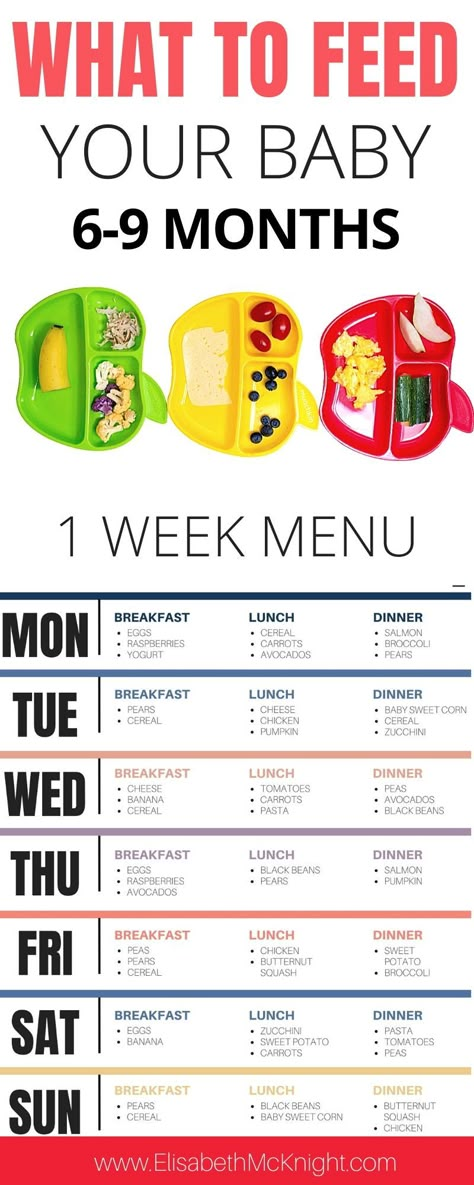
Our Happy Baby Experts are a team of lactation consultants and registered dietitian nutritionists certified in infant and maternal nutrition – and they’re all moms, too, which means they’ve been there and seen that. They’re here to help on our free, live chat platform Monday - Friday 8am-6pm (ET). Chat Now!
Read more about the experts that help write our content!
For more on this topic, check out the following articles and recipes:Starting Solids: Purees versus Baby Led Weaning
Starting Solids: Baby Led Weaning
The Division of Responsibility: Helping Avoid Picky Eating
Feeding Tips for Healthy Weight Gain in Babies and Toddlers
Our meal plans offer recipe and meal suggestions for your child. They are not designed to replace your doctor’s recommendations, nor do they take into account special nutritional needs, including allergies and intolerances. The meal plans suggest serving sizes that may or may not be appropriate for your child.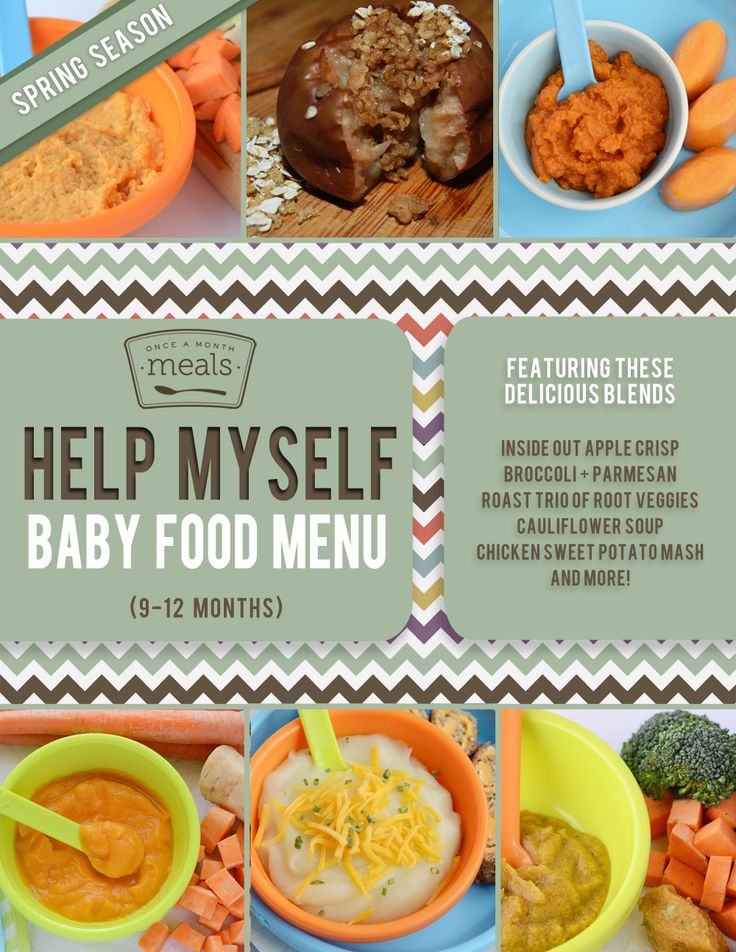 Please consult your doctor to determine what is best for your child.
Please consult your doctor to determine what is best for your child.
6-9 Month Old Baby Food Puree Menu (FREE Printable)
Home » Recipes by Age » 6-9 Months » 6-9 Month Old Baby Food Puree Menu (FREE Printable)
This 6-9 Month Baby Food Menu brings new and exciting ideas to the table — literally! Know what to feed your baby for breakfast, lunch, and dinner using Stage 1 and Stage 2 baby foods. Plus, there is a free printable menu that you can use to map out your baby’s meals for the entire week!
Medically reviewed and co-written by Jamie Johnson, Registered Dietitian Nutritionist (RDN), and Lauren Braaten, Pediatric Occupational Therapist (OT).
6-9 Months Baby Food MenuAre you looking to plan your baby’s meals out for the week?
Then this meal plan is for you!
This easy-to-use meal plan guide featuring Stage 1 and Stage 2 Baby Food purees has month-to-month meal suggestions for your baby’s breakfast, lunch, and dinner.
I even included a free printable for you to print and fill out with what your baby will eat at each meal. It’s a convenient tool for use at home or to be sent to your daycare, grandparents, or caregiver’s house.
Is it your first time making homemade baby food? If you answered yes, then I suggest you start this journey by reading my in-depth Guide on How to Make Homemade Baby Food. The detailed article goes over all the essential information such as the best cooking tools to have on hand, safe storage, knowing when your baby is ready for solids, introducing purees, making the best first foods for baby, and more! You can also check out my best-selling cookbook for even more information and recipes.
How to Make Baby Food
Watch this video to see how easy it is to make your own baby food!
Frequently Asked Questions
When can baby eat purees?
When a baby can start on solids is determined by their own rate of development, which generally comes between 4-6 months of age. Some of the developmental milestones babies need to reach in order to start solids include: if your baby has solid control of their head and neck, if your baby has doubled in weight, and if your baby is reaching for or opening their mouth when you eat (see my guide here). Before you start baby on purees, you should consult with your pediatrician to make sure your child is developmentally ready.
Some of the developmental milestones babies need to reach in order to start solids include: if your baby has solid control of their head and neck, if your baby has doubled in weight, and if your baby is reaching for or opening their mouth when you eat (see my guide here). Before you start baby on purees, you should consult with your pediatrician to make sure your child is developmentally ready.
How many ounces of purees should baby eat?
By the time baby is ready for finger foods, she should be eating around 4 ounces of food at each meal. If it is more or less than this, do not worry. Babies get most of their nutrition from formula or breast milk until they turn 1 year old.
Does baby need teeth to eat?
The question of how babies can chew foods without teeth makes any parent scratch their heads! But in reality, we all chew food with our back molars, not our front teeth, which baby doesn’t get until 18-22 months of age. Good thing babies have super tough and strong gums, which they use to mash, gnaw and chew foods. Baby’s gums are better at chewing food than you would think, and your baby will be able to chew more foods the older they get, even without their molars.
Good thing babies have super tough and strong gums, which they use to mash, gnaw and chew foods. Baby’s gums are better at chewing food than you would think, and your baby will be able to chew more foods the older they get, even without their molars.
These tools will make it a lot easier to make homemade baby food purees. For more of my favorite kitchen tools make sure to check out my shop.
TOOLS NEEDED- blender or food processor
- baking sheet
- saucepans
- knives
- veggie peeler
- spatula
- freezer tray
- storage containers for fridge
- stasher bag
- reusable pouches
- baby food maker
- highchair
- suction bowl or baby bowl
- baby spoon
- open lid cup
- bib with catch pocket
- sleeved bib
- splat mat to cover the floor
2-3 Meals a Day
Aim to serve your baby 2 to 3 meals a day, and then add 2 more meals as your baby gets more comfortable with the eating process.
Start by feeding your baby 1-2 ounces of a puree, and if they want more food, then, by all means, offer them more. However, if they turn their heads or clamp their mouths shut, take the food away and try again later.
Pick the Right TimeYou don’t want to try out new food or have mealtime when your baby is hungry. It’s best to feed your baby solid foods when they already had a little breastmilk or formula in their tummies but not when they’re too full either.
Breastmilk & FormulaBabies will continue to get most of their calories from breastmilk or formula until around one year of age. So don’t be stressed if it takes a little more time for your baby to develop their new eating skills. At this stage, feeding your baby solids is mostly for exposure and practice.
Serve a Wide Range of FoodsIt’s significant to serve babies assorted foods.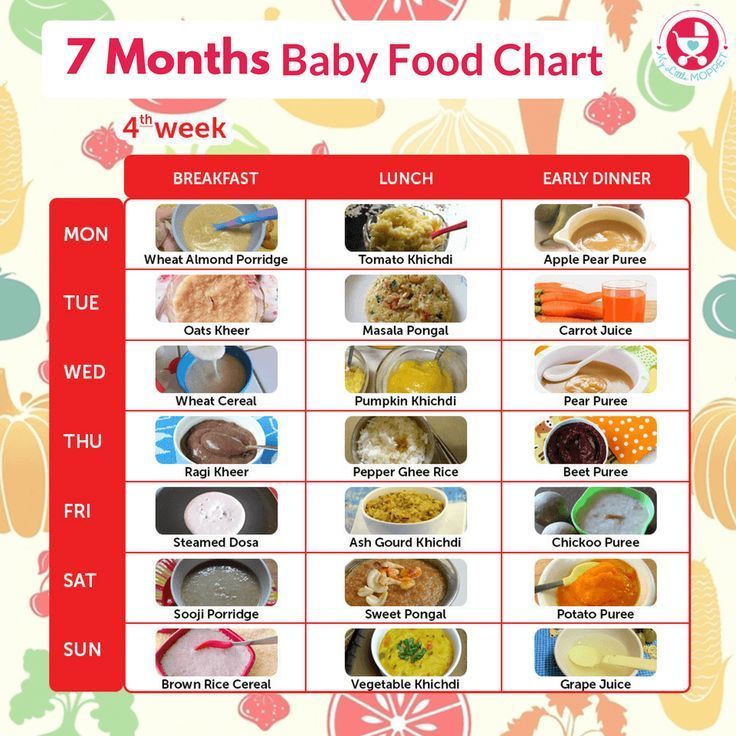 Aim for lots of colors, textures, and flavors. Exposing your baby to various foods now will help them be comfortable with a wide range of foods down the road and help prevent picky eating.
Aim for lots of colors, textures, and flavors. Exposing your baby to various foods now will help them be comfortable with a wide range of foods down the road and help prevent picky eating.
It may take your baby up to 10 times of trying a certain recipe to decide if they like it or not. So remember to keep offering them that particular kind of food, even if they push it away the first 9 times you offer it.
Be PatientSome days your baby might eat everything you put in front of them, and other days, they might refuse to open their mouths. As challenging as it may be, you just have to increase your patience with them and follow their lead. Remember that each time you sit down for a meal together is a chance to work on new skills — how to sit on a high chair, hold (and drop) a spoon, reach out, grab a sippy cup, etc. So nothing is lost even if they don’t eat a single bite of food; they are still learning.
Get your FREE Printable HERE!Download
7 Month Menu OptionsAt 7 months, your baby’s expanded palate can probably tolerate thicker purees compared to last month.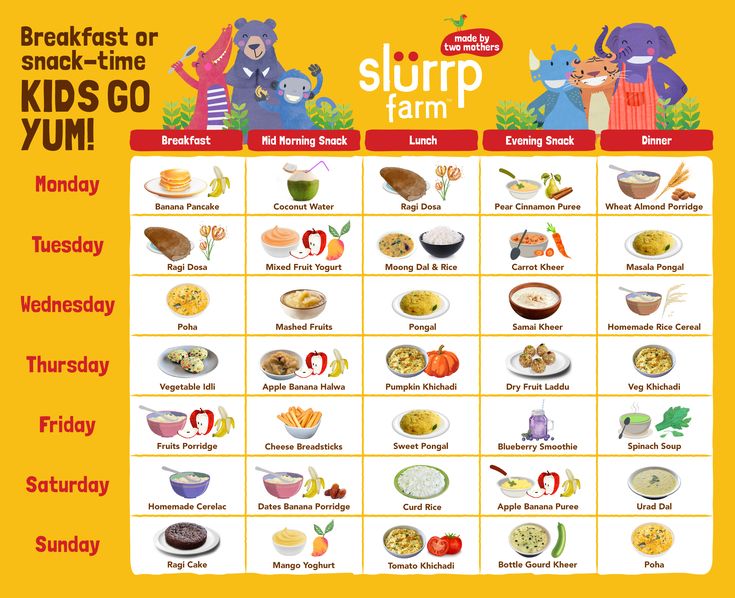 However, they should still be getting the majority of their calories from breastmilk or formula.
However, they should still be getting the majority of their calories from breastmilk or formula.
- Roasted Banana + Cinnamon Puree
- Apple, Raspberry + Vanilla Puree
- Banana, Blueberry + Avocado Puree
- Full Fat Plain Yogurt mixed with Banana, Cherry + Beet Puree
- Spinach Avocado Oatmeal Breakfast Cereal
- Spinach + Apple Puree
- Blackberry + Kale + Apple Puree
- Sweet Corn, Squash + Apple Puree
- Blueberry Chickpea with Rosemary Puree
- Green Pea Hummus for Baby
- Roasted Root Veggies Puree served with Multi-Grain Probiotic Baby Cereal
- Broccoli + Asparagus Puree
- Mango + Kale Puree with Ginger
- Turkey, Corn + Zucchini Puree
- Oats, Spinach + Avocado Puree
At 9 months, your baby should be extremely comfortable with stage 2 purees and may start transitioning to stage 3 purees, which have soft chunks that babies can easily chew. By now, your baby should be eating from all of the food groups with 3 meals and 1-2 snacks a day, along with breastmilk or formula.
By now, your baby should be eating from all of the food groups with 3 meals and 1-2 snacks a day, along with breastmilk or formula.
- Strawberry Quinoa Breakfast Cereal
- Blueberry Oatmeal for Baby
- Apple + Mint with Cottage Cheese
- Cherry, Banana + Raspberry Puree
- Spiced Pear Oat Puree
- Sweet Potato, Carrot, Cauliflower Puree with Chia Seeds
- Carrot, Corn + Pumpkin Puree
- Apple, Spinach + Pea Puree
- Superpower Green Puree
- Thai Chicken Puree with Mango
- Beef + Sweet Potato Puree with Thyme
- Sweet Potato, Beets + White Beans Puree (can be served chunky)
- Chunky Summer Veggie Pasta for Baby
- Peach Rice Pudding for Baby
- White Fish + Carrot + Leek Puree
Baby Menu PrintableDownload
diet for a 6-month-old baby with breast and artificial feeding, an approximate menu for a week in the table, a diet for a day
Published: 02/10/2021
Reading time: 4 min.
Number of reads: 211415
Author of the article: Ponomareva Yulia Vladimirovna
Pediatrician, candidate of medical sciences, allergist-immunologist
Changes in a child in the first year of life are very rapid, and each month is not like another. The 6-month milestone is very important, it is largely evaluative and transitional. By this age, most babies have doubled their birth weight, are about 15 cm tall, and some babies have already erupted their teeth. The age of 6 months is also transitional in terms of nutrition. Breast milk or an adapted formula is still the basis of the diet, but with the beginning of the second half of life, all children, without exception, should begin to receive complementary foods. Despite the general graph of growth and weight gain and indicators of psychomotor development, the status and diet of children at 6 months can be very different.
Content: Hide
- The first feeding of 6 months
- The start of complementary foods at 4-5 months
- The second half of the life
- for a week for a child at 6 months
The first feeding of
If the baby is healthy and breastfed, and his mother eats a full and varied diet, exclusive breastfeeding is possible until this age. Cereal complementary foods in this case are preferable to start. This is due to the high energy and nutritional value of cereals, the ability to significantly enrich the baby's diet with a delayed start of the introduction of complementary foods.
Cereal complementary foods in this case are preferable to start. This is due to the high energy and nutritional value of cereals, the ability to significantly enrich the baby's diet with a delayed start of the introduction of complementary foods.
However, the rate of expansion of the child's diet in this situation will be accelerated. Before the 8th month of life, it is necessary to introduce all basic food groups into the baby’s menu, since in the second half of the year the need for additional intake of nutrients and micronutrients is very high. Another reason explaining the importance of the rapid introduction of complementary foods is the formation of immunity of the immune cells of the intestine to ordinary food. If a child is introduced to these foods at the age of 4-8 months, the risk of developing food allergies has been proven to be reduced.
Complementary feeding starts at 4-5 months
In today's life, the nutrition of a nursing mother, unfortunately, is not always complete.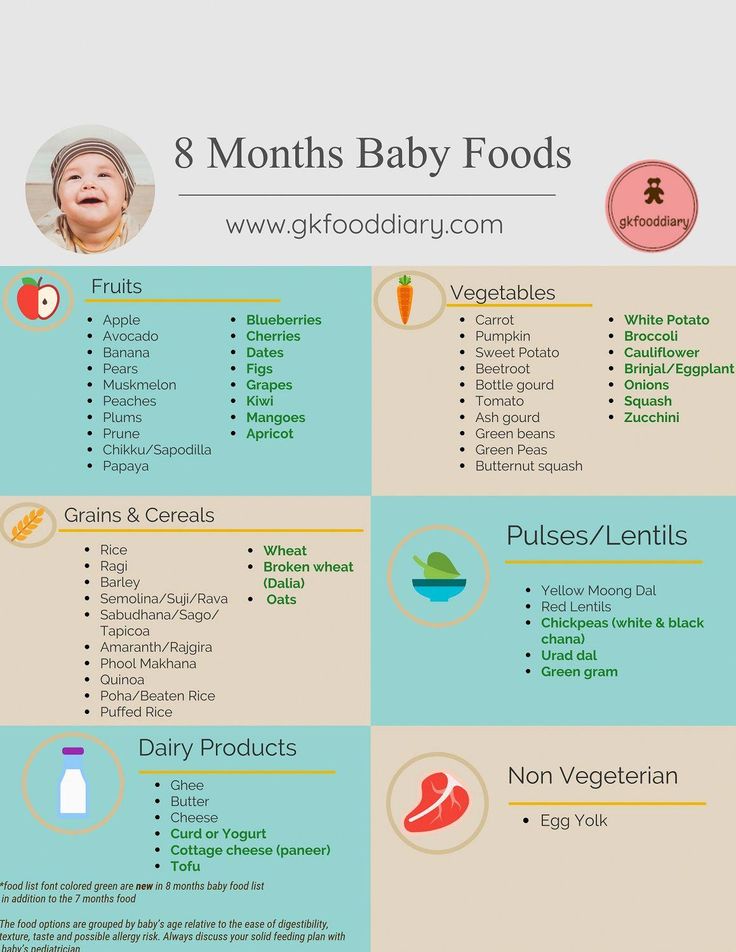 Therefore, for most breastfed babies, complementary foods already need to be introduced from 5 months in order to prevent deficient conditions.
Therefore, for most breastfed babies, complementary foods already need to be introduced from 5 months in order to prevent deficient conditions.
If a child is bottle-fed, then by the 4th month of life, the baby will not have enough adapted formula alone, and in this group of children, the timing of the introduction of complementary foods usually shifts a month earlier than in breast-fed babies. Accordingly, by 6 months, children will have vegetable puree and gluten-free porridge (buckwheat, corn and rice) in their diet. In the first half of life, monocomponent meals are used (that is, from one type of grain and vegetables), prepared on the basis of water, breast milk or an adapted mixture.
Fruit puree and juice can be another possible complementary food for children under 6 months of age without allergy symptoms. In a child with a risk of developing or manifesting allergies, the timing of the introduction of fruit complementary foods is shifted to the 8th month.
Second six months of life
Children over 6 months of age can supplement their diet with cereals containing gluten. First of all, these are oatmeal and wheat porridge, and then multi-cereal dishes with the addition of other cereals (millet, barley, rye). If the child does not have any manifestations of allergies, milk porridge can be included in the menu at this age. Bebi Premium industrial baby food products include specially prepared milk that is safe to use in healthy babies in the first year of life.
First of all, these are oatmeal and wheat porridge, and then multi-cereal dishes with the addition of other cereals (millet, barley, rye). If the child does not have any manifestations of allergies, milk porridge can be included in the menu at this age. Bebi Premium industrial baby food products include specially prepared milk that is safe to use in healthy babies in the first year of life.
From the age of 6 months, the baby's diet is expanded with such important products as meat and cottage cheese. These products are a source of high-quality protein, fats, and are also rich in minerals such as iron, calcium, and phosphorus. Pediatricians and nutritionists recommend introducing meat and cottage cheese as part of combined dishes based on a fruit and vegetable and / or grain component in a ratio of 1 (cottage cheese / meat): 4–5 (fruits / vegetables / cereals).
To enrich the diet with polyunsaturated fatty acids in the second half of the year, the menu includes vegetable oil in the amount of 3–5 grams per day, which can be added to the complementary food dish. The volume of each feeding is approximately 150-170 ml, and the child can already stand up to 3.5 hours between meals.
The volume of each feeding is approximately 150-170 ml, and the child can already stand up to 3.5 hours between meals.
In the table below, we offer a menu of 6 months for a week for a child who started receiving complementary foods at the age of 4-5 months, and by the time the second half of life begins, dairy-free gluten-free cereals, vegetable and fruit purees have already been introduced into his diet.
1st day
| Seeing | 0065 50|||
| Lunch (12.30) | Vegetable soup with beef, olive oil | 100/30/3 | compot of drocked | 900 |
| Afternoon snack (16.00) | Plum puree with cottage cheese | 60/40 | |
| Breast milk/formula | 60 062 | ||
| food reception | menu | ml/g | |
| Early morning | breast milk/mixture | 150 | Milki | & Bashas Breakfast (09 cherry Bebi Premium» | 100 |
| 0065 Breast milk/mixture | 150 | ||
| children's soluble cookies "BEBIKI" Classic | |||
| GRUSHERS with rice and Claus | GRUSHIOUS WITH RISE and CRETURE 30 | ||
| Bebi Premium Kids Instant Herbal Tea | 50 | ||
| Bedtime 065 Breast milk/formula | 150 | ||
Rate the article
(Number of votes: 21, average 4. 8)
8)
Share with friends:
Diet for a child from 6 months to a year
From 6 to 12 months, your baby develops at an incredible pace. It is during this period that his body needs a sufficient amount of nutrients and trace elements. The right diet will help provide your little one with the necessary nutrients and energize them to explore the world around them and gain new skills! In order to properly build a diet from 6 months old, we have prepared approximate menus for a child, broken down by months, and the feeding table itself from 4 months old can be downloaded here.
Menu at 6 months
Menu at 7 months
Menu at 8 months
Menu at 9 months
Menu at 10 months
Menu at 11 months
Menu at 12 months
Menu at 6 months
At 6 months, the baby's diet contains monocomponent vegetable purees (broccoli, zucchini, cauliflower), 1-2 types of porridge, monocomponent meat puree and children's cottage cheese.
| 6.00 | Breast milk, 200 gr (until saturation) |
| 09:00-09:30 | Dairy-free porridge 10-150 gr (depending on the introduction of complementary foods) + breast milk at the request of the child |
| 13:00-13:30 | Vegetable puree 10-150 gr, meat puree, e.g. Hamé Turkey, 10-30 gr (depending on complementary foods) + breast milk at the request of the child |
| 18:00-18:30 | Cottage cheese 10-40 gr, fruit puree, e.g. Hamé Apple, 10-40 gr (depending on complementary foods) + breast milk (until full) |
| 21:00-21:30 | Breast milk, 200 gr (until saturation) |
| 00:00 | Breast milk, 200 gr (until saturation) |
Vegetable oil can be added to vegetables and porridge.
Menu at 7 months
By 7 months, the volume of complementary foods increases, new types of meat, vegetables and fruits are introduced. Also in the diet of the child appears yolk.
| 6.00 | Breast milk, 200 gr (until saturation) |
| 09:00-09:30 | Dairy-free porridge 150 gr + breast milk at the request of the child |
| 13:00-14:00 | Vegetable puree 150-170 gr, meat puree, e.g. Hamé Veal, 30 gr, 1/4 egg yolk + breast milk at the request of the child |
| 18:00-18:30 | Fruit and cottage cheese puree, e.g. Hamé Apple with apricot and cottage cheese, 80 g + breast milk (to saturation) |
| 21:00-21:30 | Breast milk, 200 gr (until saturation) |
| 00:00 | Breast milk, 200 gr (until saturation) |
You can add butter or vegetable oil to vegetables and porridge.
Menu at 8 months
From 8 months you can introduce baby purees with fish and meat purees with the addition of offal. You can also start offering fruit in a nibbler so your little one can scratch their teeth and try new flavors.
| 6.00 | Breast milk, 200 gr (until saturation) |
| 09:00-09:30 | Milk/dairy-free porridge 150g, fruit puree, e.g. Hamé Apple with blueberries, 40g + breast milk of your choice |
| 13:00-14:00 | Vegetable puree 150 gr, meat puree, e.g. Hamé Beef with tongue, 50 gr, 1/2 egg yolk + breast milk on request |
| 18:00-18:30 | Fruit and cottage cheese puree, e.g. Hamé Apple with peach and cottage cheese, 80 g + breast milk (to saturation) |
| 21:00-21:30 | Porridge with butter 60 gr + breast milk (until full) |
| 23:30-00:00 | Breast milk, 200 gr (until saturation) |
A more satisfying dinner with the addition of porridge contributes to sound sleep without frequent awakenings for feeding.
Menu at 9 months
The daily menu is filled with new types of products from all categories: fish purees, sour-milk products and cereals.
| 6.00 | Breast milk, 200 gr (until saturation) |
| 09:00-09:30 | Milk/dairy-free porridge 150 gr, fruit puree, e.g. Hamé Apple with raspberries, 40 gr + breast milk at the request of the child |
| 13:00-14:00 | Vegetable puree 150 gr, fish or meat puree, e.g. Hamé Chicken, 60 gr, 1/2 egg yolk + breast milk as desired by the child |
| 18:00-18:30 | Fruit and cottage cheese puree, e.g. Hamé Apple with cottage cheese, 100 gr + breast milk (to saturation) |
| 21:00-21:30 | Porridge with butter 60 gr + breast milk (until full) |
| 23:30-00:00 | Breast milk, 200 gr (until saturation) |
At 9 months, you can enter baby cookies and up to 10 grams of bread.
Menu at 10 months
At this age, the baby’s menu can be slightly diversified with some dishes from the general table: weak broths, cottage cheese puddings or casseroles, vegetables and fruits, grated on a fine grater.
| 6.00 | Breast milk, 200 gr (until saturation) |
| 09:00-09:30 | Milk/dairy-free porridge 150 gr, fruit puree, e.g. Hamé Apple and Carrot, 60 gr + breast milk on request |
| 13:00-14:00 | Vegetable puree 150 gr, fish or meat puree, e.g. Hamé Beef with heart, 70 gr, 1/2 egg yolk + breast milk as desired by the child |
| 18:00-18:30 | Cottage cheese 50g, fruit puree, e.g. Hamé Apple & Strawberry, 80g + breast milk (to saturation) |
| 21:00-21:30 | Porridge with butter 60 gr + breast milk (until full) |
| 23:30-00:00 | Breast milk, 200 gr (until saturation) |
During the day, you can offer children's cookies and up to 10 grams of bread.
Menu at 11 months
At this age, the baby makes the first attempts to eat on its own. Parents can help by offering chopped soft fruits and vegetables. Steamed meat dishes are also suitable: meatballs, meatballs, fish fillet or finely chopped boiled chicken.
| 6.00 | Breast milk, 200 gr (until saturation) |
| 09:00-09:30 | Milk/dairy-free porridge 150 gr, fruit puree, e.g. Hamé Apple and banana, 60 gr + breast milk of the child's choice |
| 13:00-14:00 | Vegetable puree 150 gr, fish or meat puree, e.g. Hamé Beef with liver, 80 gr, 1/2 egg yolk + breast milk on request |
| 18:00-18:30 | Fruit and cottage cheese puree, e.g. Hamé Apple with blueberries and cottage cheese, 100 gr + breast milk (to saturation) |
| 21:00-21:30 | Porridge with butter 60 gr + breast milk (until full) |
| 23:30-00:00 | Breast milk, 200 gr (until saturation) |
During the day, you can offer children's cookies and up to 10 grams of bread.
Menu at 12 months
At this age, parents begin to introduce the baby to a common table adapted to his needs, gradually expanding the diet with new tastes and textures of products. You can offer your child baby vermicelli, greens, forest and garden berries. Meat puree can be coarsely ground, your baby will gobble up meatballs and cutlets with great pleasure.
| 6.00 | Breast milk, 200 gr (until saturation) |
| 09:00-09:30 | Milk/dairy-free porridge 150g, fruit puree, e.g. Hamé Apple with strawberries, 80g + breast milk of your choice |
| 13:00-14:00 | Vegetable puree 150 gr, fish or meat puree, e.g. Hamé Beef with chicken and beef 80 gr, 1/2 egg yolk + breast milk as desired by the child |
| 18:00-18:30 | Fruit and cottage cheese puree, e. |



